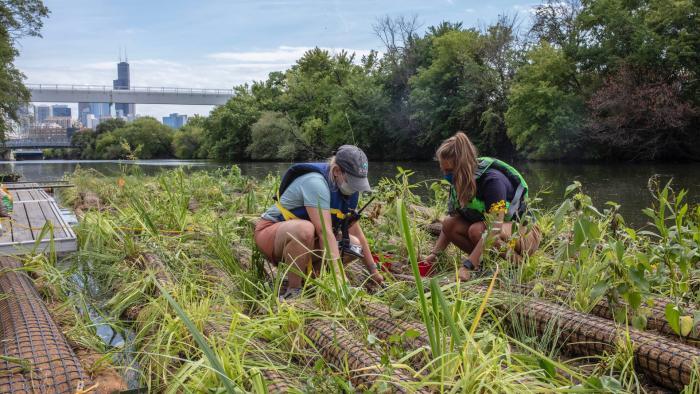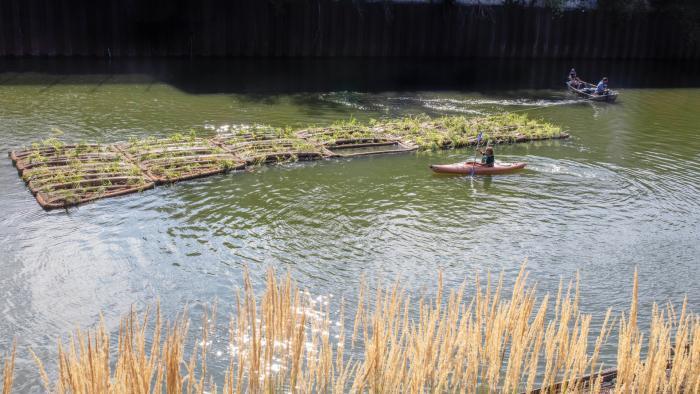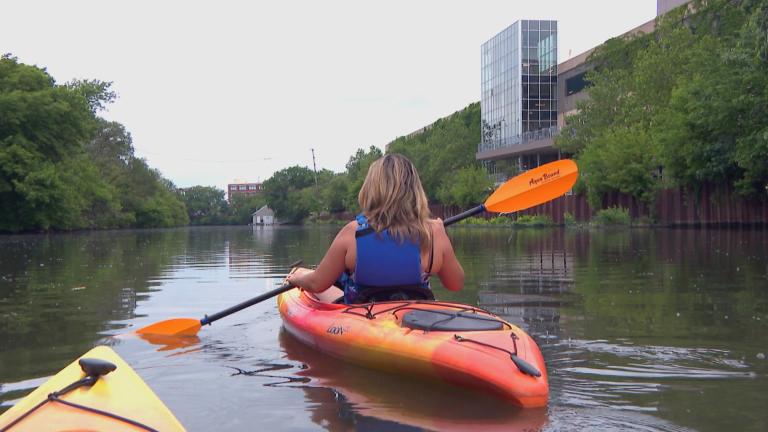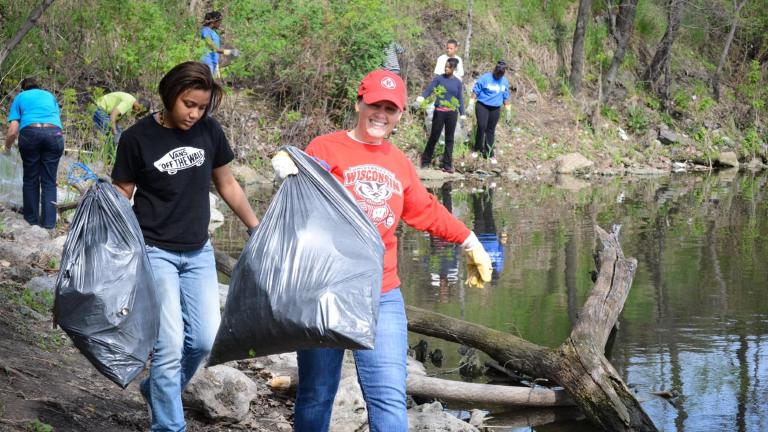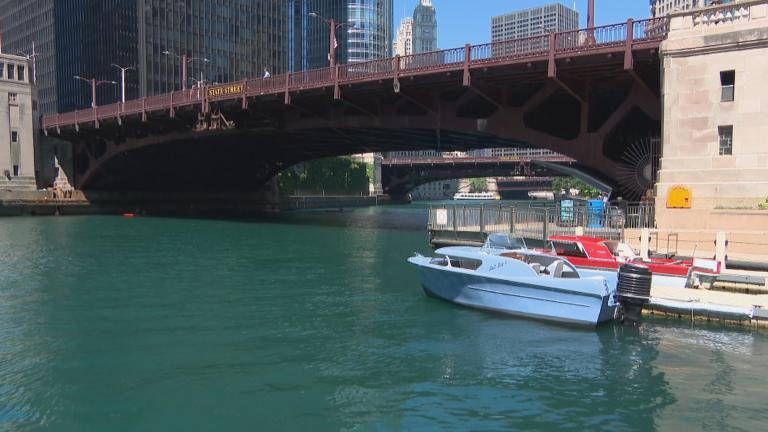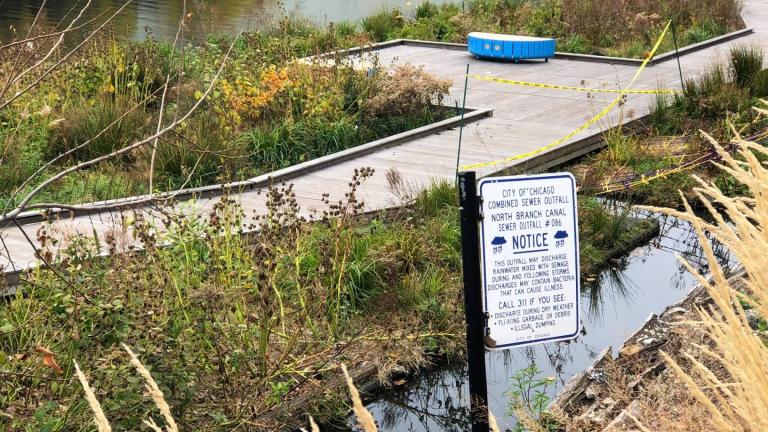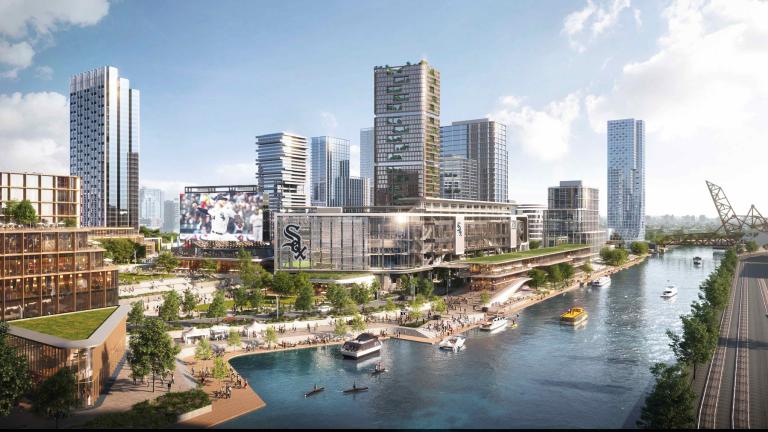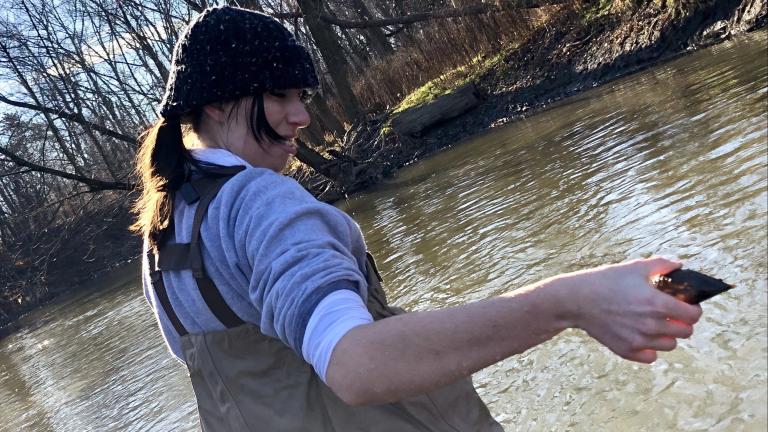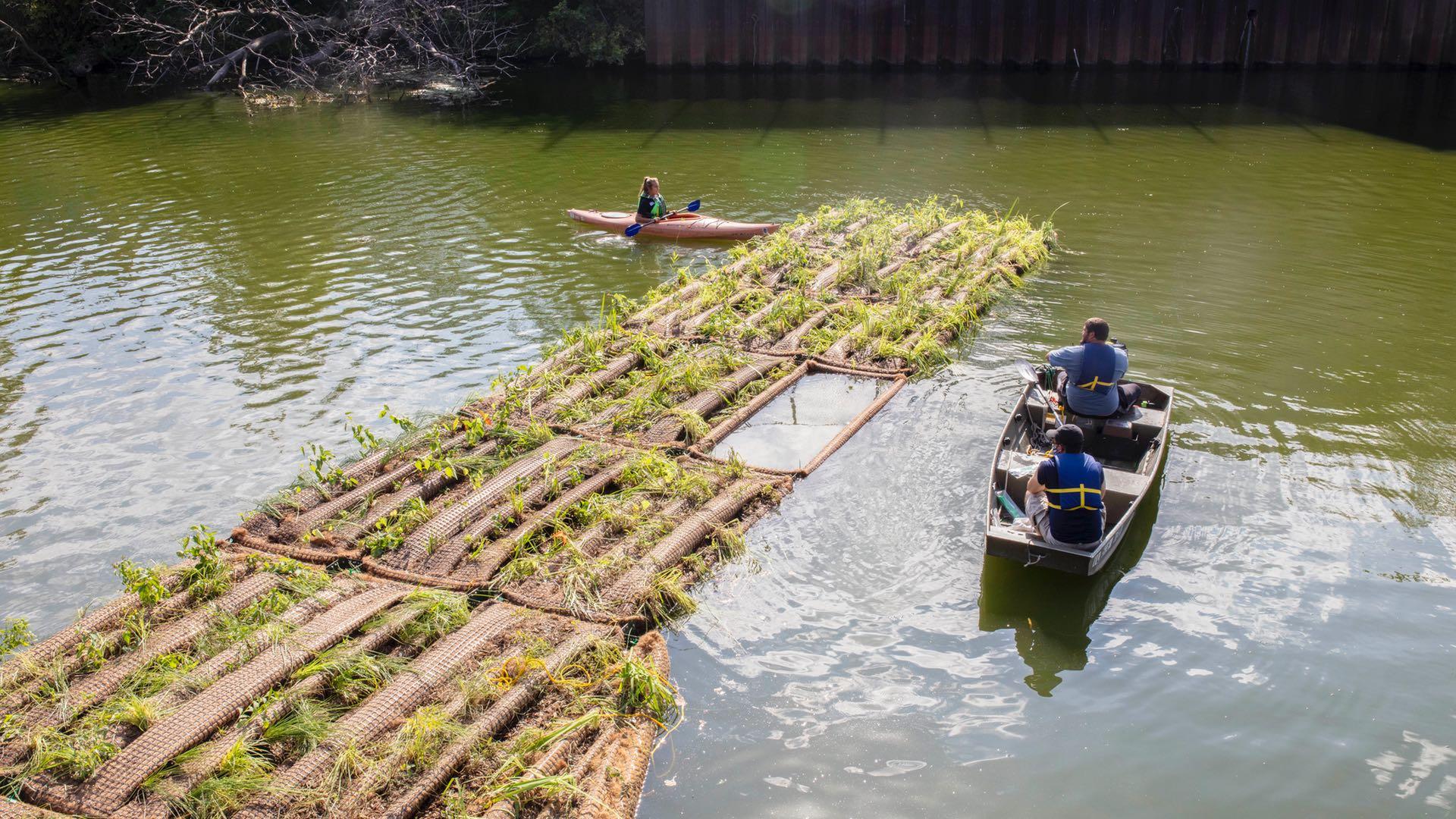 Floating habitat being positioned on the Chicago River. (Shedd Aquarium / Brenna Hernandez)
Floating habitat being positioned on the Chicago River. (Shedd Aquarium / Brenna Hernandez)
Rafts loaded with plants floated down the Chicago River last week, a strange sight that in decades past might have been the result of some sort of bizarre garbage spill but these days is a sure sign of the waterway’s ongoing “re-wilding.”
The buoyant gardens were launched in a joint effort by the Shedd Aquarium and Urban Rivers, the latest in a series of floating wetlands being positioned in the North Branch Canal as part of the “Wild Mile” floating eco-park.
More than 5,000 plants, spanning more than 5,000 square feet, were anchored in the river during the process, building on existing installations. (Catch a glimpse from the riverwalk behind the Lincoln Park Whole Foods.)
Shedd Aquarium research biologist Dr. Austin Happel has been studying the wetlands’ impact on local wildlife and found more than 10 species of fish using the habitats for spawning in 2019, according to a statement from the Shedd. Participants in Shedd’s Kayak for Conservation program documented more than 2,300 wildlife sightings around the river habitats, also in 2019.
Healthy habitat forms the foundation of the river’s ecosystem, said Margaret Frisbie, executive director of Friends of the Chicago River.
Her organization just released the latest findings from its 2020 Natural Areas Assessment survey, reporting on overall native plant coverage at 14 targeted work sites, encompassing more than 400 total acres along the river within Chicago parks and forest preserves.
Nearly 70% of the surveyed area is now populated by native plants, up from just under 50% five years ago, when the survey began.
Benefits of native plants include deep roots that break up dirt and absorb stormwater, and they also support Chicago’s native wildlife, from bees and butterflies to fish and turtles.
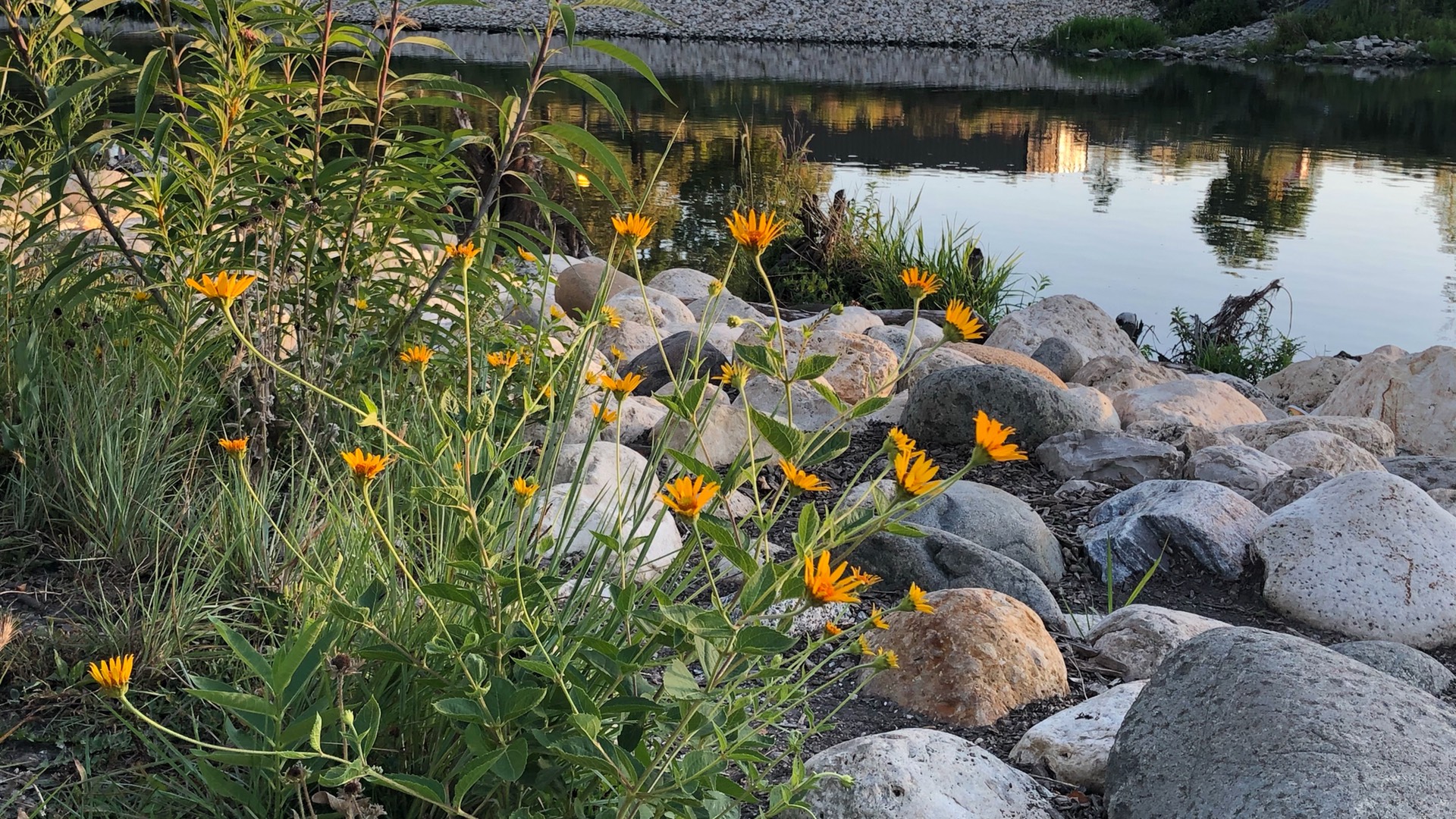 A habitat work site in River Park. (Patty Wetli / WTTW News)
A habitat work site in River Park. (Patty Wetli / WTTW News)
Much of the restoration work is focused on removing invasive species, Frisbie said, particularly buckthorn, which not only crowds out natives but also contributes to soil runoff that winds up as muck at the bottom of the river, smothering wildlife.
The 2020 assessment survey showed that buckthorn is now down 75% at target sites, meaning native seed has a better chance of blossoming.
The difference is night and day, said Frisbie, pointing to LaBagh Woods on the Northwest Side as an example of the transformation wrought by diligent maintenance.
“What used to be a dense, dark wood is now dappled with sunlight,” she said.
To highlight all of the progress made in revitalizing the river, Friends of the Chicago River recently celebrated the grand reopening of the Bridgehouse Museum at Michigan Avenue and Wacker Drive, which, when it debuted in 2006, helped spur development of the Chicago Riverwalk.
New exhibits showcase all of the advocacy efforts and restoration efforts that have led to a significantly cleaner and healthier river. And they also remind visitors of the waterway’s primacy, as one placard notes: “Before there was a city, there was a river.”
 Left to right: Angela Tovar, chief sustainability officer, City of Chicago; Kari Steele, president of the Water Reclamation District of Greater Chicago; Margaret Frisbie, executive director of Friends of the Chicago River; Kimberley Neely Du Buclet, commissioner of the Water Reclamation District of Greater Chicago; Gia Biagi, commissioner of the Chicago Department of Transportation. (Courtesy of Friends of the Chicago River)
Left to right: Angela Tovar, chief sustainability officer, City of Chicago; Kari Steele, president of the Water Reclamation District of Greater Chicago; Margaret Frisbie, executive director of Friends of the Chicago River; Kimberley Neely Du Buclet, commissioner of the Water Reclamation District of Greater Chicago; Gia Biagi, commissioner of the Chicago Department of Transportation. (Courtesy of Friends of the Chicago River)
Speaking at the reopening ribbon-cutting, Frisbie remarked on how far the river has come in a little more than a decade.
“The river was fenced off, fragmented and polluted,” she said. “But today, the river is healthier than it has been in 100 years, and despite continued impacts of sewage and stormwater pollution and the climate crisis, it is alive with wildlife and people who now consider it a truly valuable natural resource and who want to work with us to protect it.”
Contact Patty Wetli: @pattywetli | (773) 509-5623 | [email protected]


